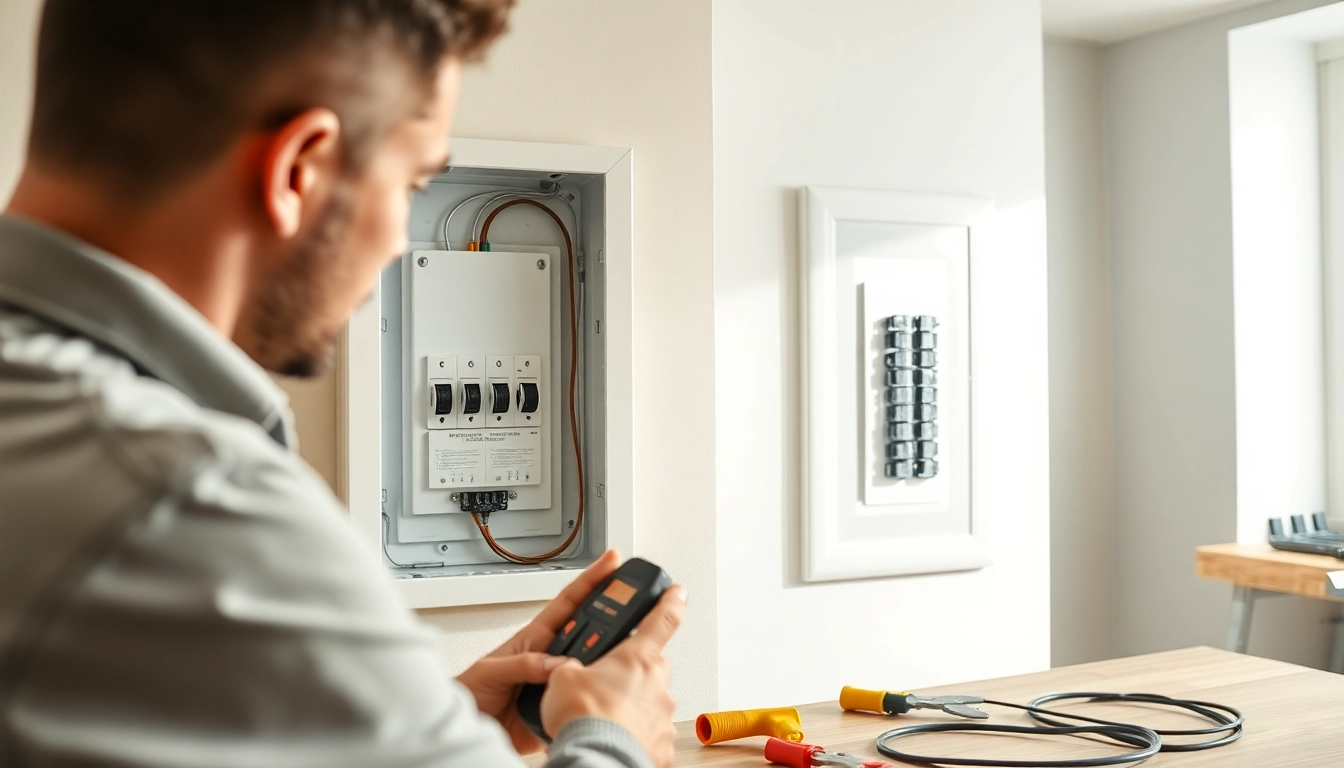Understanding the Electrical Panel and Its Importance
The electrical panel, often referred to as a breaker box or distribution board, is a crucial component of your home’s electrical system. It serves as the central hub that distributes electricity from the service line into various circuits throughout your home, powering everything from lights to appliances. To comprehend the necessity of maintaining and upgrading these panels, it’s essential to explore their structure and function. In this comprehensive guide, we will examine the electrical panel in depth, its components, signs indicating it may need an upgrade, how to select a new panel, the upgrade process, and maintenance tips to ensure longevity and safety.
What is an Electrical Panel?
An electrical panel is essentially the heart of your home’s electrical system. It controls and distributes electrical power throughout the residence. Inside the panel are circuit breakers which act as automatic switches to protect an electrical circuit from overload. There are two primary types of panels: main panels, which handle incoming electricity from the utility, and subpanels, which expand circuit capacity in larger homes. Each circuit breaker within the panel manages a separate electrical circuit, ensuring safety and preventing fires.
Components of an Electrical Panel
Understanding the components of an electrical panel can help you recognize potential problems and needs. Key components include:
- Main Breaker: This controls the electricity flow into your home and provides a way to disconnect all power.
- Individual Circuit Breakers: Each breaker protects a specific circuit by cutting off electricity in case of overload.
- Buses: These metal bars provide a connection point for your circuit breakers.
- Grounding System: This connects the electrical system to the ground, preventing excess electricity build-up.
- Neutral Bus Bar: It connects the neutral wires from the electrical circuits.
How Electrical Panels Work
The operation of electrical panels is fundamental to the safety and functionality of your home’s electrical system. The main breaker receives electrical power from your utility provider and directs this electricity to the circuit breakers within the panel. Each circuit breaker is calibrated to handle a specific amperage, which protects the wiring and devices connected to that circuit. If the electricity flowing through a circuit exceeds its capacity, the breaker trips, cutting off the power to prevent overheating and potential fires.
Signs You Need to Upgrade Your Electrical Panel
Recognizing when your electrical panel requires an upgrade is vital for safety and efficiency. Several signs can indicate that it’s time to consider an upgrade:
Frequent Circuit Breaker Trips
One of the most noticeable signs that your electrical panel might be struggling is if the circuit breakers trip frequently. This can occur due to overloaded circuits, which flashes a warning sign that your current panel may not be equipped to handle the power demands of your household.
Older Electrical Systems
If your home was built several decades ago, you might have an outdated electrical panel. Older panels may lack the capacity and safety features needed for modern electrical demands. For instance, systems built in the mid-20th century often have 60-amp panels, which may not support current electrical needs efficiently.
Increased Power Demands
As lifestyle and technology evolve, so do your power needs. The incorporation of smart home technology, powerful appliances, and electric vehicles increases the demand on your electrical panel. If you’ve noticed increased power requirements but haven’t upgraded your panel, this can lead to safety hazards.
Choosing the Right Electrical Panel for Your Needs
When it’s time to upgrade your electrical panel, choosing the right one is critical. Various options are available based on your household’s specific power requirements.
Types of Electrical Panels Available
There are generally three types of electrical panels:
- Main Breaker Panels: These panels have a main breaker to control the distribution of electricity and can manage households with standard electrical demands.
- Subpanels: Ideal for larger homes or properties with detached garages, subpanels reduce load on the main panel.
- Load Centers: These panels distribute electricity to different circuits and can be customized to fit the needs of complex circuits.
Calculating Required Amperage
Assessing your home’s electrical demands can help you calculate the amperage required for a new panel. Consider the number of circuits you’ll need, the type of devices you use, and the frequency of use. A typical household might require a 200-amp panel, especially if frequently using high-demand appliances like air conditioners and electric water heaters.
Reputable Brands and Models
Choosing a reputable brand ensures reliability and durability. Brands such as Square D, Siemens, and Eaton offer various models that suit different household needs. Researching user reviews and expert recommendations can further guide your decision.
The Electrical Panel Upgrade Process
Upgrading your electrical panel is not just a matter of swapping out components; it requires careful planning and safety considerations.
Preparing for the Upgrade
Before initiating an upgrade, assess whether your electrical system can accommodate the new panel and if any permits are necessary. Understanding your local electrical codes is crucial, as compliance is mandatory for safety and insurance purposes.
Hiring a Qualified Electrician
Upgrading an electrical panel is complex and must be carried out by a qualified electrician. Ensure that the contractor you hire is licensed, insured, and experienced in electrical panel upgrades. Review references and verify credentials before making a decision.
What to Expect During the Installation
During the installation process, expect the following steps:
- Power Disconnection: The electrician will shut off power to the home to ensure safety.
- Removal of the Old Panel: The existing panel is removed, and connections to the service lines are safely detached.
- Installation of the New Panel: The new panel is installed, circuits are reconnected, and proper grounding is established.
- Inspection: Once installed, the panel will typically need to pass an inspection to ensure compliance with safety standards.
Post-Upgrade Maintenance and Safety Tips
Once you’ve upgraded your electrical panel, maintaining its functionality is crucial to achieving long-lasting safety and efficiency.
Regular Inspections and Testing
Schedule regular inspections for your electrical panel and the circuits it controls. Look for signs of wear, such as burnt spots or unusual sounds. A professional electrician should conduct a comprehensive inspection every few years, or sooner if you notice any issues.
Keeping Your Electrical Panel Accessible
Ensure that the area around your electrical panel remains clear and accessible. Avoid placing furniture or storage in front of the panel to facilitate easy access during emergencies or inspections.
Safety Precautions Around Electrical Panels
Always take safety precautions when handling electrical panels. Keep the panel dry and ensure all connections are secure. Educate all family members about electrical safety and the importance of reporting any signs of trouble.



